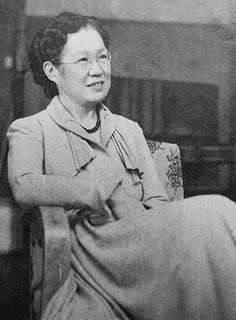Institute for Research in Humanities, Kyoto University is an institution for research into the humanities and ethno-ecological studies. It has a distinctive school tradition, as heir to the philosophically-oriented Kyoto School, but differs from the latter in its broader cultural interests.

The University of Shiga Prefecture is a public university in Hikone, Shiga, Japan. The predecessor of the school was founded in 1950, and it was chartered as a university in 1995.

Kyoto Gakuen University is a private university in Kameoka, Kyoto, Japan. The school's predecessor was founded in 1925, and it was chartered as a university in 1969. Its campuses are located in Kameoka and Ukyō-ku, Kyoto.

The Japanese School of Kuala Lumpur is a Japanese international school in Saujana Golf and Country Club in Subang, Selangor, Malaysia. The syllabus at this school is based on the Japanese Education Curriculum.

Itō Chūta was a Japanese architect, architectural historian, and critic. He is recognized as the leading architect and architectural theorist of early 20th-century Imperial Japan.
The origins of Kyushu University in Fukuoka, Japan, lie in the establishment of Fukuoka Medical College in 1903, which was affiliated with Kyoto Imperial University. In 1911, Kyushu Imperial University was founded. In 1947, after World War II ended, the university changed its name to Kyushu University. The University is composed of six campuses: Chikushi, Hospital, Ito, Ohashi, Hakozaki, and Beppu. There are numerous historic buildings dating back to the many phases of history the university has seen. The Third Residential Complex on-campus has a western-style design and is reserved for foreign students. The complex dates back to 1924 and has been designated as a Municipal Cultural Property.
Akira Fujiwara was a Japanese historian. His academic speciality was modern Japanese history and he was a professor emeritus at Hitotsubashi University. In 1980 he became a member of the Science Council of Japan and was a former chairman of the Historical Science Society of Japan.

Shintarō Arakawa is a Japanese linguist who specializes in the study of the extinct Tangut language.

Japanese School of Beijing (JSB) is a Japanese education day school in Chaoyang District, Beijing. The students are children of diplomats, businesspeople, and workers in foreign institutions.
Isamu Togawa was a Japanese writer and political commentator. Togawa was born in the city of Hiratsuka in Kanagawa Prefecture. His father was the novelist and former mayor of Hiratsuka Sadao Togawa and his younger brother was the novelist Itaru Kikumura.
Keio University (慶應義塾) is the oldest and most highly rated private university in Japan. Due to its age, its campuses have many historic buildings. This article introduces some of the school's notable architecture.

The Japanese School of Brussels a.s.b.l. is a Japanese international school located in Auderghem, Brussels. The school serves elementary and junior high school levels. It is Belgium's only Japanese international school. The Japanese Supplementary School of Brussels, a supplementary school operated on Saturdays, is held on the premises of the JSB.

Waseda Shibuya Senior High School in Singapore is a Japanese international boarding school in West Coast, Singapore. It is affiliated with Waseda University, making it an overseas branch of a Japanese private school, and is located on the island's west coast. The school is operated by Waseda Shibuya Senior High School in Singapore Pte. Ltd.
Nishiyamato Gakuen Junior High School and High School is a private junior and senior high school for boarding and day students in grades 7–12. It is a co-educational college preparatory school, with approximately 1,600 students. The school consists of a junior high school and a senior high school, both located in Kawai, Kitakatsuragi District, Nara Prefecture, Japan, 26 kilometres southeast of Osaka.

The Lycée Français International de Tokyo is a French international school in Takinogawa (滝野川), Kita, Tokyo, serving levels Kindergarten through high school. It is a part of the Agency for French Education Abroad. At one time the school was located in Chiyoda, and its name was the Lycée Franco-Japonais de Tokyo.

The Escuela Japonesa de Panamá is a Japanese international school in the Marbella area, Bella Vista (ES), Panama City. It was established on October 12, 1974.

The Jakarta Japanese School is a Japanese international school in Pondok Aren, South Tangerang, Indonesia. It is regionally located in the Greater Jakarta area.
Yō Yoshida is a Japanese actress who is represented by the talent agency Oranku.

The singing voice of Japan is the name of a social and political movement that emerged after World War II in Japan and based on musical and choral activities of the working class of the entire nation. On the ideological position of communism or democratic socialism, activists of the movement organize choral circles in factories, in schools and in their residential areas. The movement reached its peak in the years 1950–60. Japanese singer Akiko Seki is generally regarded as the founder of the Singing Voice of Japan.
Akira Yoshida is a former Japanese rugby union player who played as centre.
















